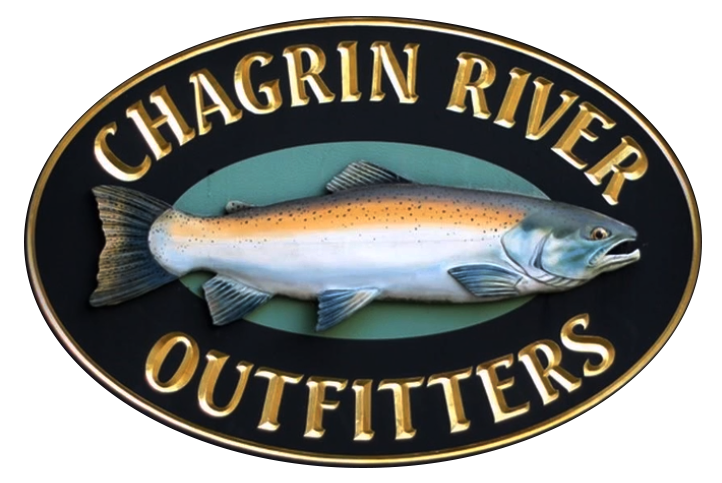Fly-fishing rods are categorized by weight, action, and length.
Rod Weight:
This is measured in line weight, which is not the actual weight of the rod. Typically, manufacturers print the recommended rod's weight line and rod's length on the blank near the reel seat and/or the rod tube. In general, you want to match the rod’s recommended line weight to the fly line weight.
A higher line weight generally means a heavier rod, capable of casting larger flies and lines. On the other hand, a lower weight rod allows you to cast smaller flies and lines. Another way that you can think about this is that lower weight rods are best suited for smaller fish and higher weight rods are best suited for larger fish.
Rod Action:
Rod action refers to the way a fishing rod bends and flexes when pressure is applied to the tip. It is a crucial factor to consider when selecting a fishing rod, as it affects casting distance, hook-setting power, and overall performance. Here are the main types of rod action:
• Fast Action: Bends primarily in the top third of the rod. Offers more power and distance, good for windy conditions and larger flies.
• Medium-Fast Action: Bends in the top half of the rod. Provides a balance of power and accuracy, suitable for a wide range of situations.
• Medium Action: Bends in the top two-thirds of the rod. Offers more flexibility and feel, ideal for delicate presentations and smaller flies.
• Slow Action: Bends throughout most of the rod. Provides the most flexibility and feel, best for very small flies and precise presentations.
In general, Slow and Medium action rods are best suited for beginners. Medium-Fast and Fast Action rods are best suited for Intermediate and more Proficient casters.
Rod Length:
Typically, rods come in 9’ length, and here following are some reasons where using a different length rod can be beneficial.
• 7ft-8ft: Shorter rods are more maneuverable in tight spaces and offer better accuracy at close range.
• 9ft-10ft: Longer rods provide more power and distance, ideal for open water and windy conditions. 10’ rods are better to control the drift and mend the fly line when indicator/nymph fishing.
Rod Materials:
Graphite and fiberglass fly fishing rods differ primarily in their material properties, leading to distinct performance characteristics.
Graphite
• Sensitivity: Graphite is a stiffer material, allowing for greater sensitivity in detecting subtle bites and providing more feedback to the angler.
• Casting Distance and Accuracy: Graphite's stiffness enables efficient energy transfer, resulting in longer and more accurate casts.
• Weight: Graphite rods are generally lighter than fiberglass, making them easier to handle for extended periods.
• Durability: While graphite is strong, it can be more susceptible to breakage from impact or bending too far, especially in cheaper models.
• Action: Graphite rods are often associated with faster actions (stiffer), but they can be found in various actions.
Fiberglass
• Durability: Fiberglass is more flexible and resilient, making it less prone to breaking from impacts or overbending, making it ideal for beginners or fishing in challenging environments.
• Feel and Action: Fiberglass rods typically have a slower, more moderate action, which some anglers prefer for a traditional feel and better performance in close-range situations, like small streams.
• Sensitivity: Fiberglass rods are generally less sensitive than graphite, which can be a disadvantage for detecting subtle bites but also means less chance of pulling the hook out of a fish's mouth during the strike.
• Casting: Fiberglass rods are excellent for roll casting and fishing at close to medium distances.
• Weight: Fiberglass rods are generally heavier than graphite rods, though modern fiberglass rods are significantly lighter than older models.
Rod Weight/Length by Fish Specie:
Here following are some general recommendations on selecting a fly rod by target specie:
|
Fish Species
|
Line Weight
|
Rod Length
|
|
Small trout and panfish
|
2 - 4wt
|
7’- 9’
|
|
Larger trout
|
4 - 5wt
|
9’
|
|
Musky and pike
|
10 - 12wt
|
8’ – 9’
|
|
Smallmouth and largemouth bass
|
6 - 8wt
|
9’
|
|
Steelhead
|
6 - 8wt
|
9’ 6”- 10’
|
|
Striped bass, bonefish, bluefish, striper, snook, seatrout, permit, juvenile tarpon, and salmon
|
8 - 10wt
|
9’
|
|
Large tarpon and Giant Trevally (GT)
|
10 – 12wt
|
9’
|
Call the shop at 440-247-7110 or email us at chagrinriveroutfitters@gmail.com for questions and recommendations.

